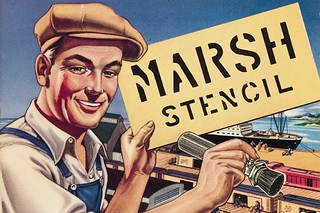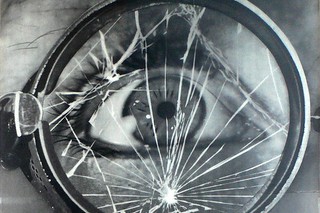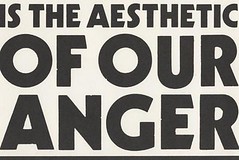Feature: Design history
Money. Magic. Light.
Factors of scale ensured a glittering take-off for two corporate identities. But what do they actually communicate?
Marked by time
Two catalogues reveal much about stencil-making in Germany and the US in the mid-twentieth century, while offering clues to the industry's future in the decades following their publication.
Social vision
RoSPA’s Second World War safety posters challenge orthodox views of British Modernism
Seize the sans serif
Raw, vigorous, experimental and often funny, Ark magazine helped to transform British graphics
The image as evidence
The career of Germano Facetti is exceptional in its range. As art director of Penguin Book covers in the 1960s and as a designer, he was a powerful influence on book and information design, throwing a special light on Modern Movement aspirations and on attitudes to illustration. Facetti has maintained the concept of “documentary” and diagrammatic illustration to induce understanding, to express emotion, or to accumulate information in a more memorable way.
Political clout: Australian posters
Screenprints gave both activists and artists a means of direct expression
Revolutionary language
“A revolutionary graphic language must seek to expose the meaning by presenting a chain of ideas, images, structures in as much of their complexity as is economically feasible.” Robin Fior in The Designer, journal of the society of industrial artists and designers, London, May 1972.
The work must be read
Lawrence Weiner’s art is a kind of sculpture made of language, free from excess or embellishment and strangely familiar from its far-reaching influence on graphic designers
Punk uncovered: an unofficial history of provincial opposition
British punk gave a sound, a voice and a visual currency to the disenfranchised and remote. Overlooked, uncelebrated and difficult – the output of the anonymous artworkers who packaged the vinyl spewed out by punk’s first waves captured the oppositional (and occasionally political) spirit of the time. By Russell Bestley and Ian Noble.
Concrete poems just are
Concrete poetry never won full acceptance, despite the efforts of exponents all over the world. In the digital era its innovations are ripe for reassessment



